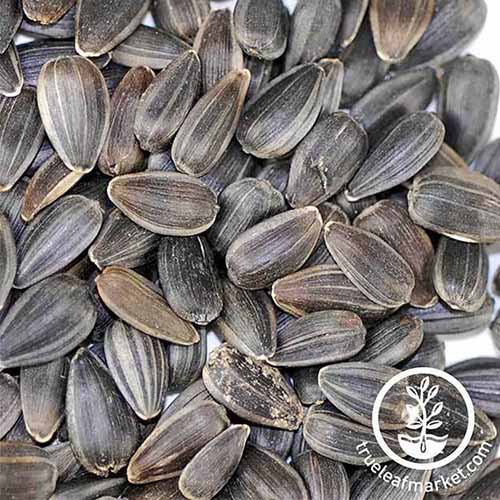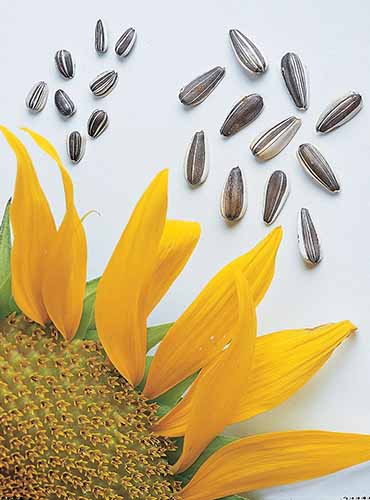How to Grow Sunflowers as a Cover Crop
Growing cover crops is a sustainable way to add organic matter to your soil and prevent erosion.
When you choose to plant sunflowers as a cover crop, you may get the added benefit of having beautiful flowers available for arrangements, and possibly seeds to harvest for the birds as well.
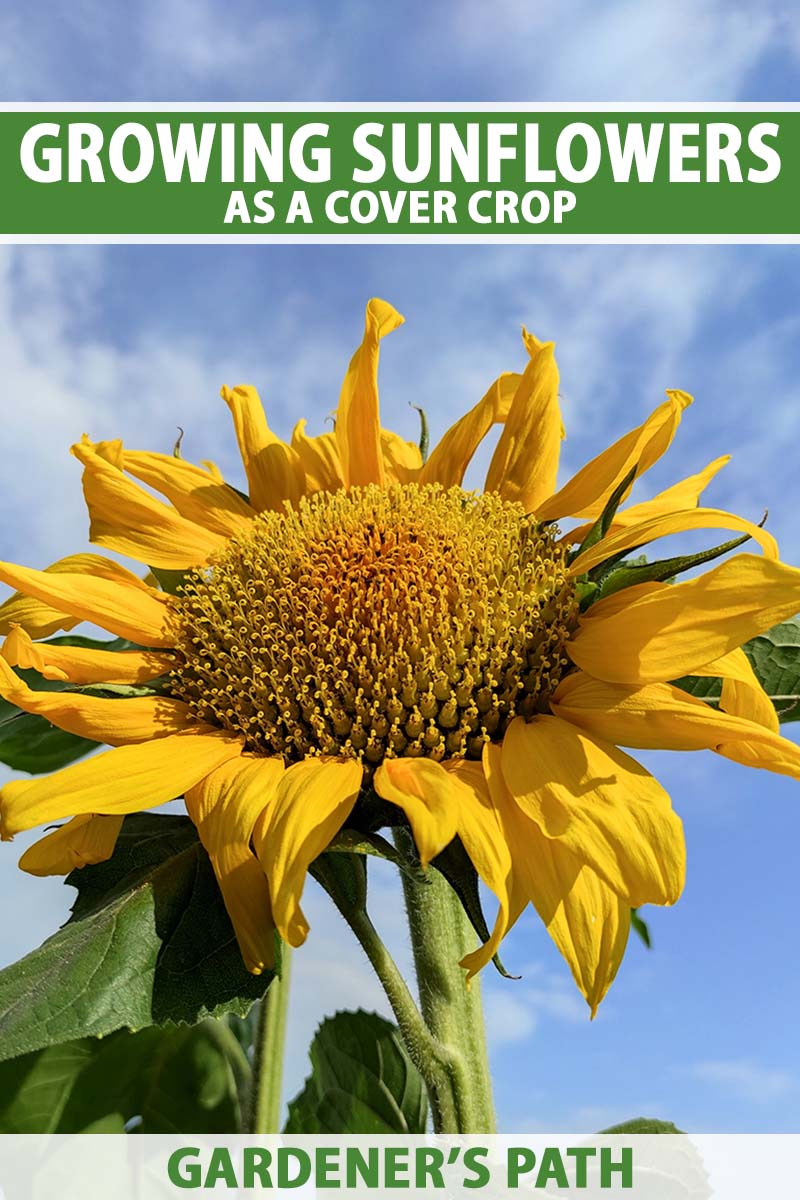

We link to vendors to help you find relevant products. If you buy from one of our links, we may earn a commission.
That’s right, those beautiful sunny blooms that are all the rage also offer multiple benefits when grown to build or replenish the soil, after a crop for edible use has been harvested but before another is planted.
Let’s dive right into the topic, so you can get growing ASAP!
(Pardon the pun…) Here’s what I’ll cover:
What You’ll Learn
Benefits of Growing Sunflowers as a Cover Crop
Eco-conscious and budget-minded home gardeners have long understood the advantages of planting a cover crop to benefit the soil.
They’re usually sown either in midsummer after a heavy-feeding vegetable like corn or tomatoes, or in late spring ahead of planting vegetables in soil that’s compacted or has been depleted.
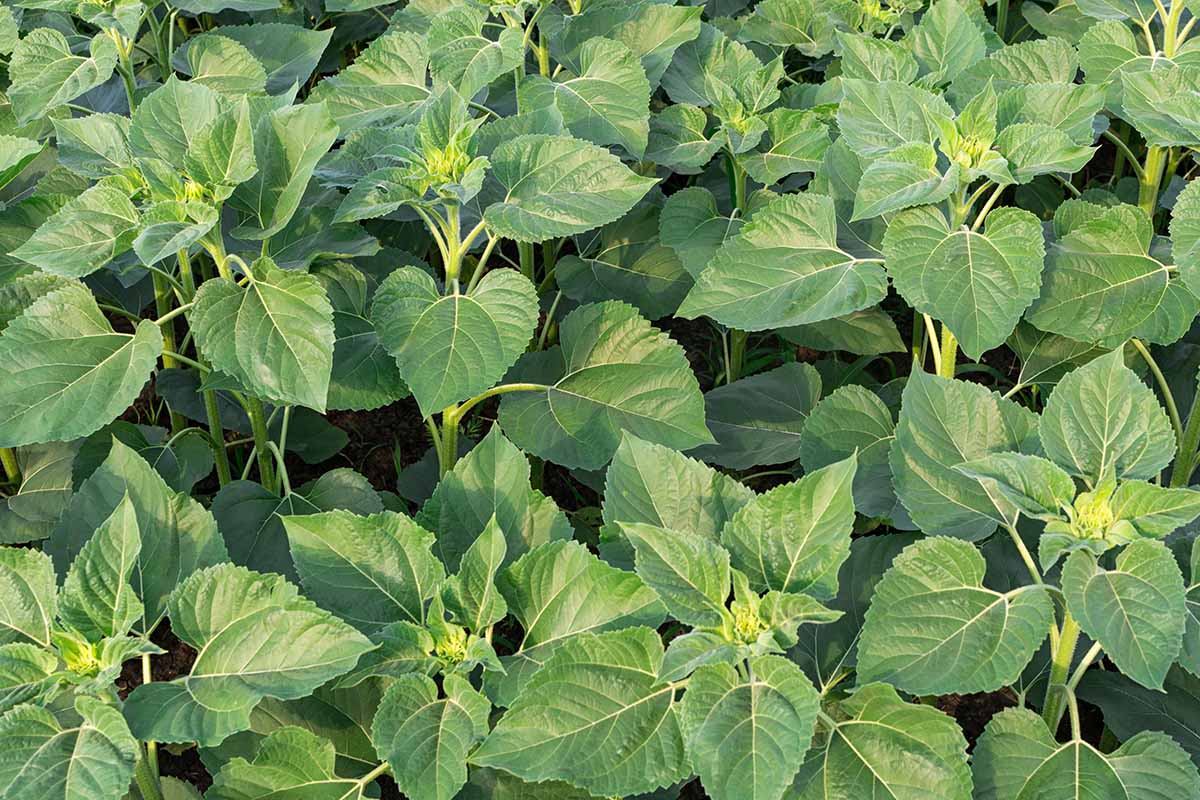

The typical cover crops are legumes, brassicas, and grasses or grains.
All of those may improve nutrition in your garden or raised bed’s dirt, and prevent erosion from carrying away valuable soil or nutrients.
The off-season planting tactic also improves soil structure and tilth, and may help break up heavy soils or aid in water retention.
When you employ sunflowers as your cover crop, you gain numerous advantages.
Critically, they will typically grow well when it’s dry and hot outdoors, making good use of minimal water, so they’re ideal following a spring crop like radishes or lettuce.
They also have significant taproots that help them survive when moisture is hard to come by. These can help to break up compact soil.
Many other types of cover crops can break up the soil, but sunflowers really excel at this.
Sunflowers help to benefit the soil in other ways too, supporting the growth of healthy mycorrhizae, or fungal structures that form a partnership with the plants’ roots, as well as beneficial bacteria and other types of healthy soil microbes.
These fungi are particularly noteworthy, as they take up phosphorus found in the ground in a form which plants can’t absorb readily and transform it into a bioavailable form of that plants can use.
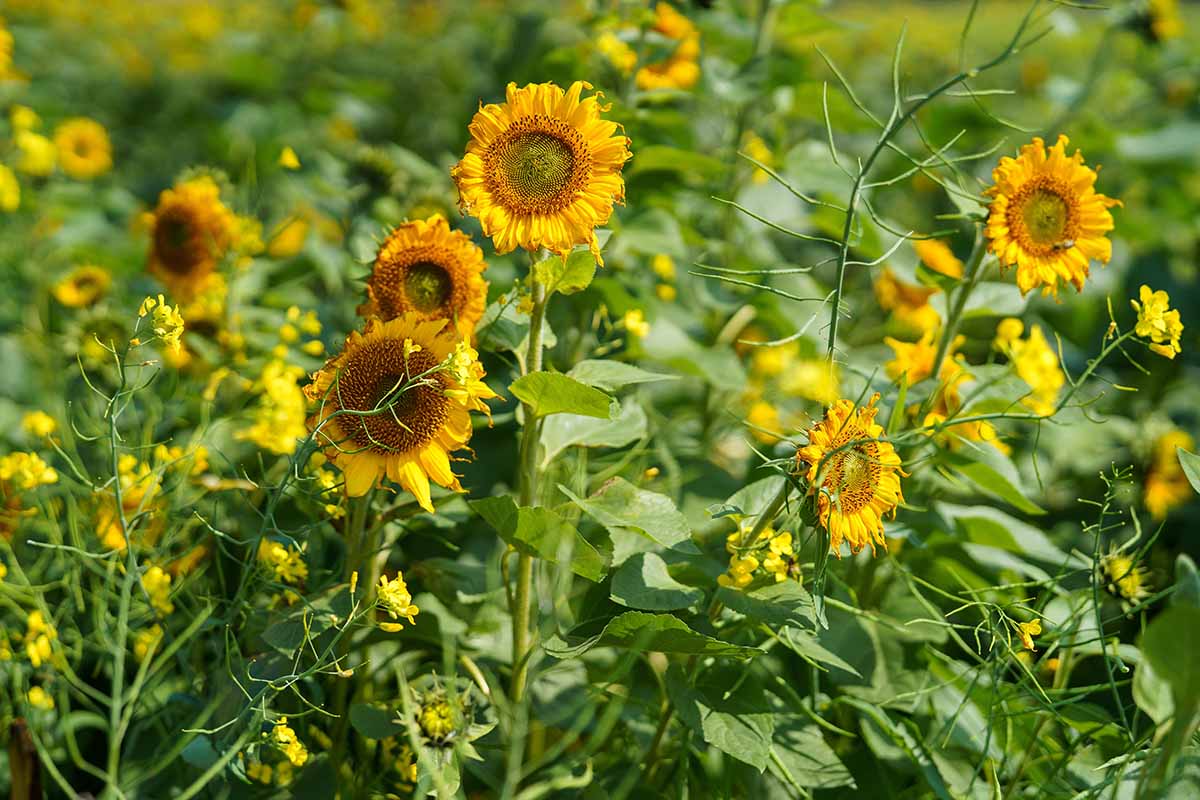

While you may have heard that sunflowers can also help to remove lead from contaminated soil, they may not prove effective for phytoremediation.
New research suggests that H. annuus is not particularly effective at removing lead from the soil, and both the metrics used to test success in this regard as well as the results may vary.
But they will add biomass to your dirt when tilled or turned over once they’re done growing. And like other types of warm-season broadleaf cover crops such as buckwheat and safflowers, most varieties have wide leaves that are ideal for suppressing weeds by shading them out.
Sunflowers can also be planted in a fashion similar to corn in the traditional Three Sisters method that combines beans, corn, and squash, wherein the tall corn stalks serve as support for climbing bean tendrils.
Sunflower crops can serve the same purpose if you utilize them as cover, allowing you to plant a diverse mix of complimentary cover crops that may benefit from the ability to climb the sturdy flower stalks.
It is also possible to grow a patch of certain H. annuus varieties in a way that benefits the soil and simultaneously yields blooms, contributing to a beautiful landscape, and possibly providing seeds to harvest and save to feed wild birds.
And one of my favorite aspects of growing sunflower cover crops is that they can be utilized as green manure starting any time after they germinate.
To me, that’s a low-stakes proposition with so much potential benefit. If all goes well and you plant them in time to bloom and develop seed heads, great – they’ll attract a wealth of pollinators to your garden that way, and please the wild birds.
But if you get a late start or the blooms last so long you don’t get to harvest seeds ahead of winter’s arrival, you can still turn those stalks and foliage under the soil surface or spread it on top as green manure.
Want to give this win-win cover crop option a try? Keep reading for tips on sowing, growing, and tilling. But first, let’s touch on a few potential downsides of selecting these plants.
A Few Potential Drawbacks
There are a few situations where sunflowers may not make the best cover crop.
They won’t grow in cooler weather, for example, so they can’t be planted as winter cover like certain varieties of clover and legumes.
And they don’t leave a lot of residues behind at season’s end, so they don’t add quite as much biomass as other options.
Their broad leaves and tall stature do mean you’ll get a bit more in terms of nutritious organic matter per plant – but again, these also typically need to be given more space to grow than types of cover seed that you would broadcast over the soil to create dense plantings.
Sunflowers also require a bit more effort in this regard not only at planting time, but during the germination period, as they’re unlikely to sprout in soil that has become compacted, creating a hard shell that’s difficult or impossible for the cotyledons to force their way through.
Self-sown seed may also prove to be a nuisance if you fail to harvest quickly enough, and these seeds may germinate in following seasons.
Some gardeners are also less than enthusiastic about inviting hungry birds and other wild critters to certain areas of the garden. Read more about protecting sunflowers from birds and squirrels in our guide.
Finally, it’s important to carefully consider your available garden space. While sunflowers may be an excellent option for gardeners who go on vacation each year through a full summer season, others who enjoy harvesting crops planted throughout the garden all summer long may not wish to see all of that valuable land go to growing sunflowers.
Pick a small section to rotate in this flowering cover in different areas of the yard from one year to the next, and you’re sure to be satisfied.
Where to Buy Seeds
Not all sunflowers are created equal when you intend to plant them as a cover crop.
The disease-resistant, open-pollinated varieties that start blooming 60 to 80 days after sowing are your best bet as a source of erosion control and green manure.
Aim to avoid any cultivars known to be prone to disease. This diminishes the low-labor benefits of planting green mulch if you have to contend with insects or unwelcome pathogens that cause disease.
Planting faster-growing varieties will help to ensure that there’s enough time for the flowers to bloom before freezing temperatures set in.
You won’t have the 110-plus days that some cultivars require before flowering if you’re planning to plant them only after harvesting vegetables in the spring, or before planting cool-weather crops in the fall with enough time in between plantings.
Even if this is a break year for the patch where you’re employing sunflowers and other types of cover crops for erosion-control and soil building, you’ll still want them to have time to flower if you want to benefit pollinators and draw wildlife.
Fortunately, the best varieties for cover cropping also tend to be available affordably in bulk. The lovely, newly introduced hybrids are beautiful, but with each seed costing at least 50 cents, they may not be practical for this application.
Some companies sell sacks of sunflower seed specifically branded as cover crops or microgreens, good choices that offer plenty of bang for your buck.
Here are a few options to get you started:
Large-Seeded Black Oil
These open-pollinated seeds are particularly appealing as food for songbirds, and they create lots of biomass. The plants will reach their mature height of five to seven feet and bloom in 65 to 80 days.
The flower heads reach four to eight inches in diameter, and the stalks usually produce one bloom each. But this variety may produce side shoots as well, given enough time.
True Leaf Market has large-seeded black oil sunflower available in 50-seed packets and various bulk sizes.
Incredible
Dwarf varieties will deliver some of the same benefits as their taller counterparts.
Of course, the taproots don’t drill down as far to loosen the soil, but these grow more quickly and are more manageable to till under at the end of the season if that’s your aim.
‘Incredible’ grows 30 to 40 inches tall, producing large leaves and nine-inch blooms in around 60 days.
‘Incredible’ seed is available in packets and in bulk sizes up to one pound from Eden Brothers.
Super Snacker
This hybrid grows five feet tall but takes just 60 to 70 days to flower, with one bloom per stalk.
If you have enough time for them to develop, it also delivers meaty seeds for humans or birds, starting four to six weeks after the blooms.
‘Snacker’ seeds are available in packets of 50 from Burpee.
Be sure to look at our list of 15 of the top sunflower varieties to grow in your garden for other options to meet various needs.
How to Sow
Sowing this type of cover crop is a straightforward process, but you’ll want to take a few precautions to make sure your planting will succeed.
First, make sure to only plant them somewhere you haven’t grown them in the past three to four years. This type of rotation discourages various soilborne diseases and pests.
They’ll also need a sunny spot. Full sun is ideal, though they’ll tolerate part shade.
Carefully time when you’ll sow, especially if you’re planning to plant after you’ve harvested another vegetable. Sunflowers can be planted before corn in some regions, or you could wait for a late-season planting to avoid sunflower moth damage if these pests are common in your area.
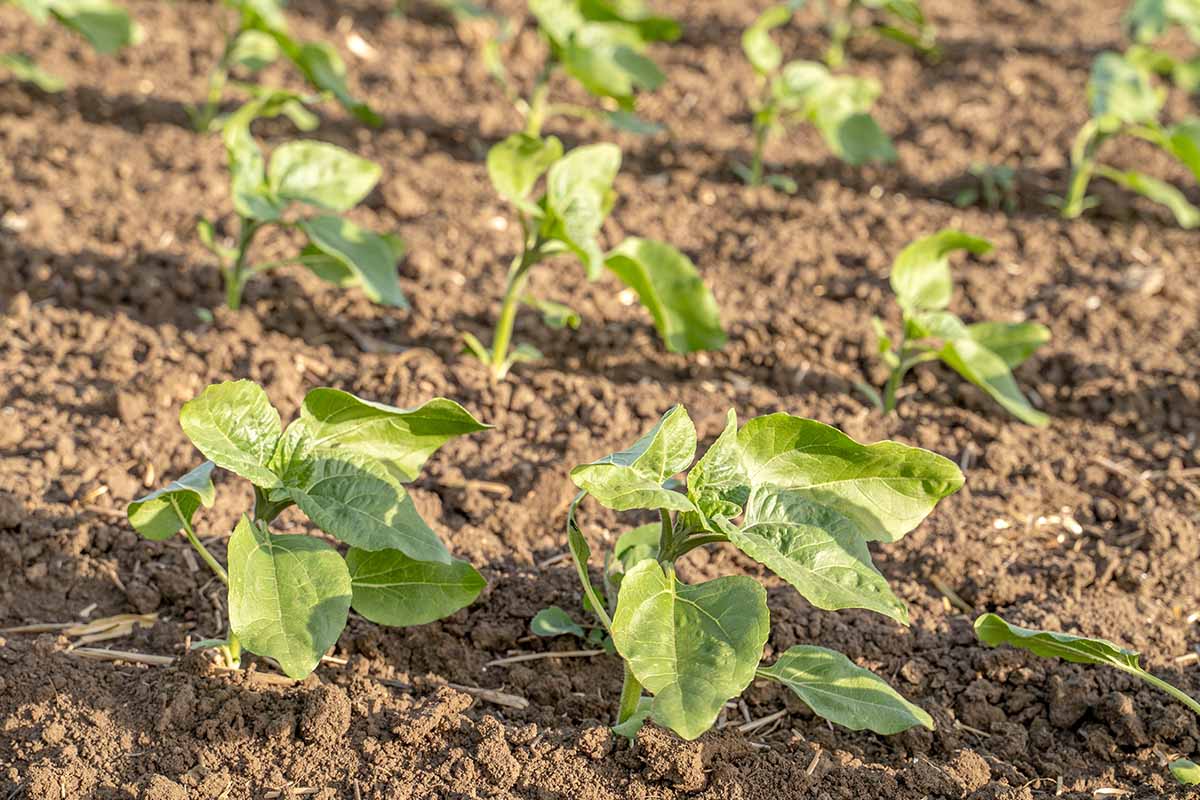

Sunflowers can be tilled in for use as green manure at virtually any point after they germinate.
But if you want to give your soil the maximum benefit, with the taproots loosening hard earth followed by the leaves and stalks adding biomass, you’ll want to give them more time to grow.
If you intend to enjoy the blooms and attract beneficial insects with your crop of H. annuus, they’ll need time to mature and flower.
The blooms usually last three to six weeks before fading and shifting their energies to developing seeds for harvest. You can pick the flowers to enjoy in vases and arrangements before tilling the rest of the plants under.
Or if you’re aiming for birdseed in addition to tillage, you’ll need to add about 20 days to your anticipated growing cycle.
Check your seed packet to determine how many days the plants will need to mature.
Look at your area’s first average killing frost date, and then count backwards from that time to see when you’ll need to sow for the plants to reach the stage of growth that you wish them to attain, whether that’s a certain height, blooming, or forming seed heads.
You also need to make sure you’re not planting too early.
The soil should be at least 50°F for spring planting. The seeds may fail to germinate or sprouts may die if temperatures are cooler or the soil’s too wet.
Excessive moisture can cause the seeds to rot in the soil. Pooled water can lead to downy mildew, and sunflowers can’t tolerate “wet feet.”
Prepare the soil where you’re planting, tilling or loosening it down to about eight inches if possible, after harvesting whatever edible crop was growing there in the previous season. Some commercial growers will plant rye or winter legume cover first in the prior season, to keep weeds down before planting sunflowers.
Weed control is a must for these plants and they will need a hand from you, whether it’s by planting winter cover, solarizing a stale seed bed, or carefully hand-picking any non-sunflower sprouts that pop up.
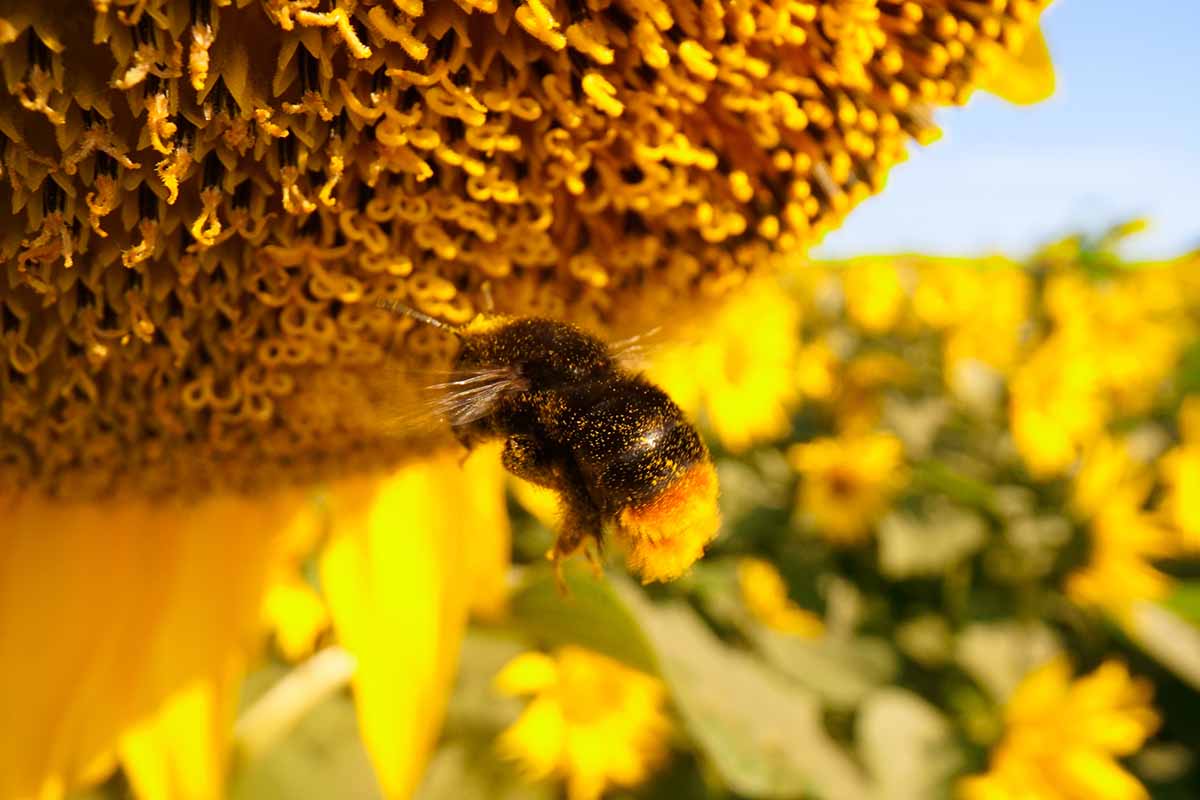

These flowers don’t require much in terms of nutrients, but they do benefit from a boost of nitrogen and can do well in garden plots where nitrogen-fixing legumes were planted previously.
Austrian winter peas are a good cover option for planting before sunflowers, or you could grow an edible legume crop and then till it in after picking your final harvest.
If part of the point of this project in your garden is for the sunflower taproots to break up the soil, they’ll probably be able to work their magic sown in just a few inches of soil that’s already been cultivated previously. You may also succeed by planting them in a no-till bed.
But while you can expect sunflowers to grow in fairly poor soil, you want to maximize germination by assuring that the dirt doesn’t crust over when they’re trying to break through.
You can help your seeds germinate by planting them beneath a shallow top layer of a commercial growing mix if your dirt is rocky or mostly clay.
Unlike many other types of cover crops, you aren’t going to broadcast the seeds, and you won’t need very many. Sow the seeds one and a half inches deep and 10 inches apart for dwarf or medium varieties, and 18 inches to two feet apart for larger cultivars.
If you plan to mow them under soon after planting and before they’ve grown too tall, feel free to sow more densely.
Gently tamp the soil down over them, and water with a fine spray to settle the soil.
Keep the soil moist but not wet until the seeds germinate.
They should sprout in 10 to 14 days, and then the cover crop process begins in earnest.
How to Grow
The sunflowers don’t know you intend to grow them as an aid to soil fertility instead of just to look at in the garden or cut for floral arrangements. So they’ll respond best to most of the same growing tactics you use for chiefly ornamental plantings.
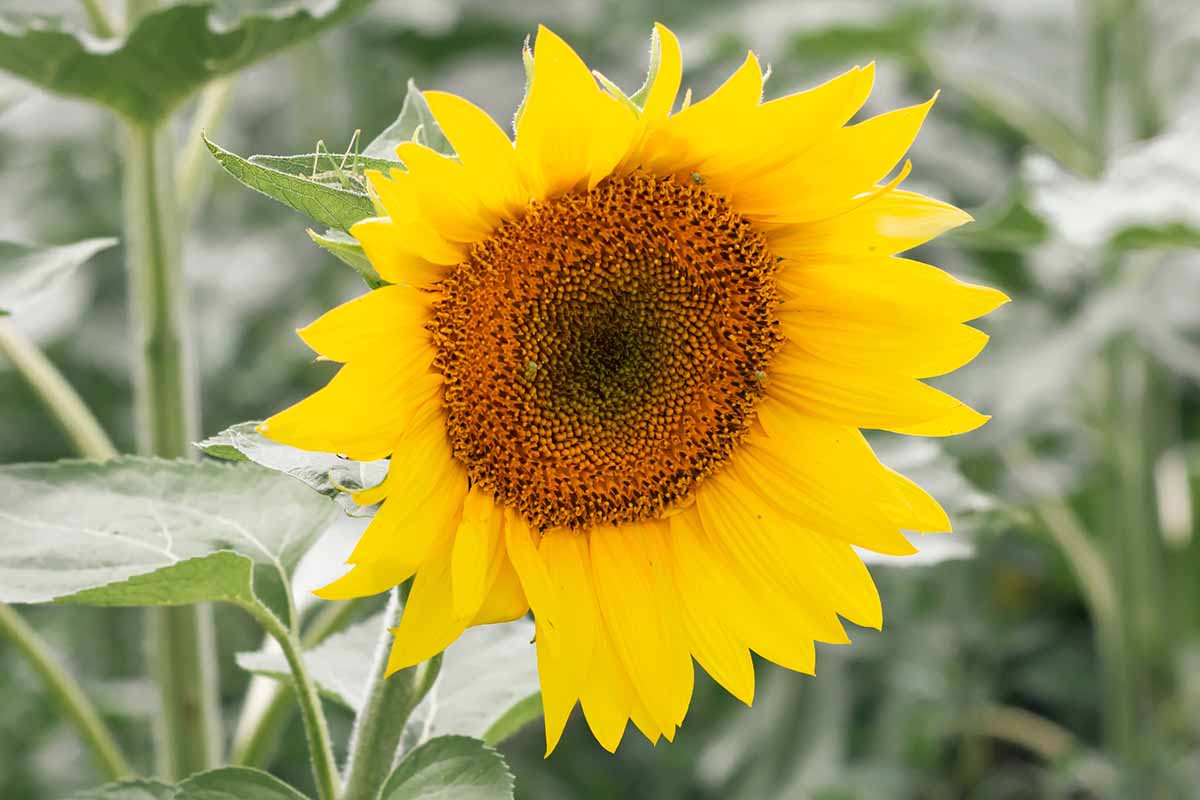

One key tactic is making sure the area is free of weeds before you sow. I know I’ve said it already, but I can’t emphasize this enough.
Sunflowers can win out against weeds when they’re mature, which is one of the reasons they make such a good cover crop, but they can only do this if they get a good head start.
Also, if you’re planting them after an edible crop that you’re not using for green manure, make sure to remove all the debris from that planting first. It’s especially important to get rid of any diseased or buggy plants, and to completely remove the roots from the prior crop.
After that, you can proceed along as you would for any sunflower planting. Once established, they do well with little water and there’s really no need for supplemental fertilizer.
Tall varieties may sometimes topple in strong winds, and these can be supported if you wish, or chopped and used as green manure when they fall.
Check out our growing guide to learn all the steps for tending these cheerful flowers.
When to Till
As I mentioned before, you can opt to use your sunflowers as green manure starting at any point after they sprout.
But you’ll probably want to wait longer to give those taproots more time to loosen compacted earth and to increase the available residue to add biomass to depleted soil.
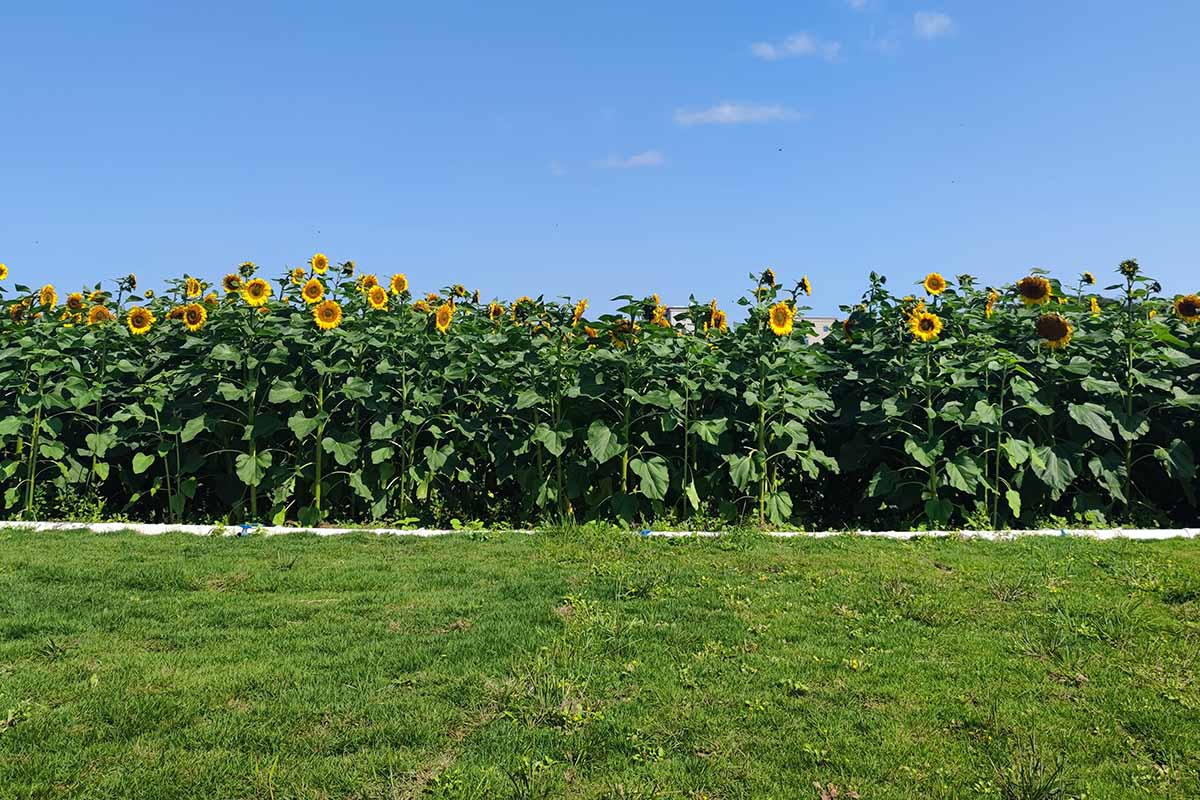

For the maximum benefit, you’ll need to till at least four weeks ahead of planting the next crop to assure the plants have enough time to break down into compost.
And a quick note, since it’s worth a mention – utilizing green manure and various types of cover may serve as erosion control since increased organic matter and living roots can help to secure silty soil or topsoil on slopes.
For a longer-term solution in problem areas across more than a single growing season, you may opt to plant a stand of perennial sunflowers instead of annuals that are tilled under after a single season.
If you wish to allow your plants to flower and produce seed, learn more strategies for timing and completing your sunflower harvest in our guide.
Especially if you opt to plant sunflowers as cover and then sow a cool-weather crop like kale afterward in the early fall, make sure you’ll have those requisite weeks available for decomposition.
As for the actual end game, you will need to kill those sunflowers! If you leave them to die on their own, there’s a good chance they’ll dry out and become unmanageable, not to mention that they’re going to be unsightly.
The easiest way to turn them into green manure is to lop them off at the base with clippers, or with the string trimmer if you’re growing a type with slender stalks.
Once the bulk of each plant is laying on the soil, you can chop it into smaller pieces with the trimmer or a chipper before spreading it back over the surface as green manure.
I prefer to create pieces that are just a few inches long because they’re easier to handle than an entire five-foot stalk. Cut them even smaller, and they’ll break down even more quickly.
If you prefer, you can also use a hoe, tiller, or spade to turn the green manure into the soil, which will help it to decompose more quickly.
To pick up more strategies for tilling cover crops at season’s end, consult our guide.
Sunflowers On My Poor Soil Make Me Happy…
It’s amazing to me that a single plant can provide so many benefits to the soil, and yield flowers for arrangements and food for wildlife or humans at the same time.
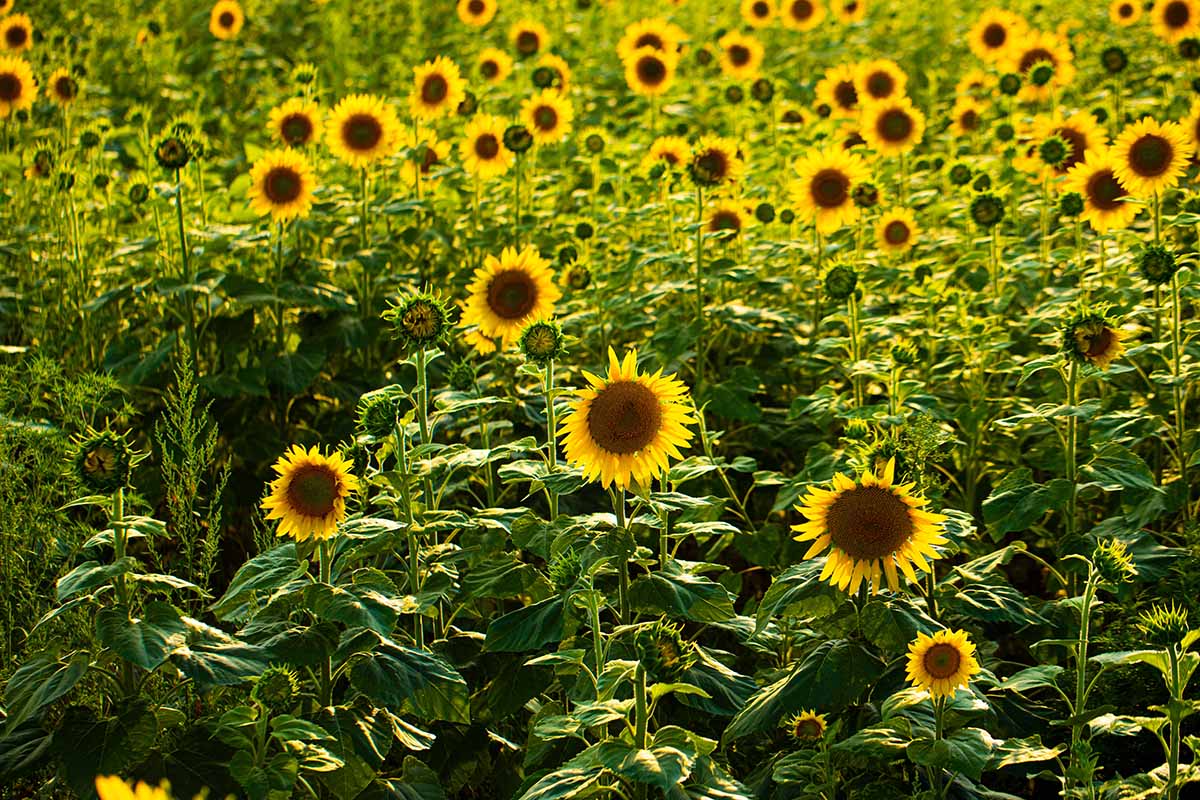

What about you? Have you tried growing H. annuus as a cover crop? If you have any tips to share or questions to ask, please chime in via the comments section below.
And to keep learning more about growing sunflowers in your garden, have a read of these guides next:

